- Home
- Kathy Reichs
Monday Mourning Page 2
Monday Mourning Read online
Page 2
As I dug, I felt the usual crime scene rush. The quickened senses. The intense curiosity. What if it’s nothing? What if it’s something?
The anxiety.
What if I smash a critically important section to hell?
I thought of other excavations. Other deaths. A wannabe saint in a burned-out church. A decapitated teen at a biker crib. Bullet-riddled dopers in a streamside grave.
I don’t know how long I’d been digging when the SIJ team returned, the taller of the two carrying a Styrofoam cup. I searched my memory for his name.
Root. Racine. Tall and thin like a root. The mnemonic worked.
René Racine. New guy. We’d processed a handful of scenes. His shorter counterpart was Pierre Gilbert. I’d known him a decade.
Sipping tepid coffee, I explained what I’d done in their absence. Then I asked Gilbert to film and haul dirt, Racine to screen.
Back to the grid.
When I’d taken square 1-A down three inches, I moved on to 1-B. Then 1-C and 1-D.
Nothing but dirt.
OK. The GPR showed a discrepancy beginning four inches below the surface.
I kept digging.
My fingers and toes numbed. My bone marrow chilled. I lost track of time.
Gilbert carried buckets of dirt from my grid to the screen. Racine sifted. Now and then Gilbert shot a pic. When all of grid one was down a level three inches, I went back to square 1-A. At a depth of six inches I shifted squares as I had before.
I’d taken two swipes at square 1-B when I noticed a change in soil color. I asked Gilbert to reposition a light.
One glance and my diastolic ratcheted up.
“Bingo.”
Gilbert squatted by my side. Racine joined him.
“Quoi?” Gilbert asked. What?
I ran the tip of my trowel around the outer edge of the blob seeping into 1-B.
“The dirt’s darker,” Racine observed.
“Staining indicates decomposition,” I explained.
Both techs looked at me.
I pointed to squares 1-C and 1-D. “Someone or something’s going south under there.”
“Alert Claudel?” Gilbert asked.
“Make his day.”
* * *
Four hours later all my digits were ice. Though I’d tuqued my head and scarved my neck, I was shivering inside my one-hundred-percent-microporous-polyurethane-polymerized-coated-nylon-guaranteed-to-forty-below-Celsius Kanuk parka.
Gilbert was moving around the cellar, snapping and filming from various angles. Racine was watching, gloved hands thrust into his armpits for warmth. Both looked comfy in their arctic jumpsuits.
The two homicide cops, Claudel and Charbonneau, stood side by side, feet spread, hands clasped in front of their genitals. Each wore a black woolen overcoat and black leather gloves. Neither wore a happy face.
Eight dead rats adorned the base of the walls.
The plumber’s pit and the two depressions were open to a depth of two feet. The former had yielded a few scattered bones left behind by the plumber and owner. The depression trenches were a different story.
The skeleton under grid one lay in a fetal curl. It was unclothed, and not a single artifact had turned up in the screen.
The individual under grid two had been bundled before burial. The parts we could see looked fully skeletal.
Flicking the last particles of dirt from the second burial, I set aside my paintbrush, stood, and stomped my feet to warm them.
“That a blanket?” Charbonneau’s voice sounded husky from the cold.
“Looks more like leather,” I said.
He jabbed a thumb at Dr. Energy’s crate.
“This the rest of the dude in the box?”
Sergeant-détective Michel Charbonneau was born in Chicoutimi, six hours up the St. Lawrence from Montreal, in a region known as the Saguenay. Before entering the CUM, he’d spent several years working in the West Texas oil fields. Proud of his cowboy youth, Charbonneau always addressed me in my mother tongue. His English was good, though “de’s” replaced “the’s,” syllables were often inappropriately accented, and his phrasing used enough slang to fill a ten-gallon hat.
“Let’s hope so.”
“You hope so?” A small vapor cloud puffed from Claudel’s mouth.
“Yes, Monsieur Claudel. I hope so.”
Claudel’s lips tucked in, but he said nothing.
When Gilbert finished shooting the bundled burial, I dropped to my knees and tugged at a corner of the leather. It tore.
Changing from my warm woolies to surgical gloves, I leaned in and began teasing free an edge, gingerly separating, lifting, then rolling the leather backward onto itself.
With the outer layer fully peeled to the left, I began on the inner. At places, fibers adhered to the skeleton. Hands shaking from cold and nervousness, I scalpeled rotten leather from underlying bone.
“What’s that white stuff?” Racine asked.
“Adipocere.”
“Adipocere,” he repeated.
“Grave wax,” I said, not in the mood for a chemistry lesson. “Fatty acids and calcium soaps from muscle or fat undergoing chemical changes, usually after long burial or immersion in water.”
“Why’s it not on the other skeleton?”
“I don’t know.”
I heard Claudel puff air through his lips. I ignored him.
Fifteen minutes later I’d detached the inner layer and laid back the shroud, fully exposing the skeleton.
Though damaged, the skull was clearly present.
“Three heads, three people.” Charbonneau stated the obvious.
“Tabarnouche,” Claudel said.
“Damn,” I said.
Gilbert and Racine remained mute.
“Any idea what we’ve got here, Doc?” Charbonneau asked.
I creaked to my feet. Eight eyes followed me to Dr. Energy’s crate.
One by one I removed and observed the two pelvic halves, then the skull.
Crossing to the first trench, I knelt, extricated, and inspected the same skeletal elements.
Dear God.
Replacing those bones, I crawled to the second trench, leaned in, and studied the skull fragments.
No. Not again. The universal victims.
I teased free the right demi-pelvis.
Breath billowed in front of five faces.
Sitting back on my heels, I cleaned dirt from the pubic symphysis.
And felt something go cold in my chest.
Three women. Barely past girl.
2
WAKING TO THE TUESDAY MORNING WEATHER report, I knew I was in for killer cold. Not the occasional mid-forties damp we whine about in January in North Carolina. I mean subzero cold. Arctic cold. If-I-stop-moving-I’ll-die-and-be-eaten-by-wolves cold.
I adore Montreal. I love the not-quite-eight-hundred-foot mountain, the old port, Little Italy, Chinatown, the Gay Village, the steel and glass skyscrapers of Centre-ville, the tangled neighborhoods with their alleys and gray stones and impossible staircases.
Montreal is a schizoid scrapper, continually fighting with herself. Anglophone-Francophone. Separatist-Federalist. Catholic-Protestant. Old-New. I find it fascinating. I delight in the whole empanada, falafel, poutine, Kong Pao multiculturalism of the place. Hurley’s Irish Pub. Katsura. L’Express. Fairmont Bagel. Trattoria Trestevere.
I partake in the city’s never-ending round of festivals: Le Festival International de Jazz, Les Fêtes Gourmandes Internationales, Le Festival des Films du Monde, the bug-tasting festival at the Insectarium. I frequent the stores on Ste-Catherine, the outdoor markets at Jean-Talon and Atwater, the antique shops along Notre-Dame. I visit the museums, picnic in the parks, bike the paths along the Lachine Canal. I relish it all.
I do not relish the climate from November to May.
I admit it. I have lived too long in the South. I hate feeling chilled. I have no patience with snow and ice. Keep your boots and ChapStick and ice hotels. Gi
ve me shorts and sandals and a thirty-blocker.
My cat, Birdie, shares this view. When I sat up he rose, arched, then tunneled back under the covers. Smiling, I watched his body compact into a tight round lump. Birdie. My sole and loyal roommate.
“I’m with you, Bird,” I said, offing the clock radio.
The lump curled tighter.
I looked at the digits. Five-thirty.
I looked at the window. Pitch-black.
I bolted for the bathroom.
Twenty minutes later I was at my kitchen table, coffee at my elbow, Petit file spread before me.
Marie-Reine Petit was a forty-two-year-old mother of three who worked at a boulangerie selling bread. Two years earlier she’d gone missing. Four months later Marie-Reine’s decomposed torso had been discovered in a hockey bag in a storage shed behind the Petit home. Marie-Reine’s head and limbs had been stashed nearby in matching luggage.
A search of the Petit basement uncovered coping, hack, and carpenter’s saws. I had analyzed the cut marks on Marie-Reine’s bones to determine if a tool similar to one of hubby’s had made them. Bingo on the hacksaw. Réjean Petit was now on trial for the murder of his wife.
Two hours and three coffees later, I gathered my photos and papers and rechecked the subpoena.
De comparaître personnellement devant la Cour du Québec, Chambre criminelle et pénale, au Palais de Justice de Montréal, à 09:00 heures, le 3 décembre—
Hot diggety. Personally invited to testify. As personal as a summons to a tax audit. No RSVP necessary.
I noted the courtroom.
Zipping into boots and parka, I grabbed gloves, hat, and scarf, set the security alarm, and headed down to the garage. Birdie had yet to uncurl. Apparently my cat had enjoyed a predawn breakfast.
My old Mazda started on the first try. Good omen.
At the top of the ramp, I braked too quickly and swam crosswise into the lane like a kid on a Slip ’n Slide. Bad omen.
Rush hour. The streets were clogged, every vehicle spinning up slush. The early-morning sun turned my salt-spattered windshield opaque. Though I applied my wipers and sprayers repeatedly, for stretches I found myself driving blind. Within blocks, I regretted not taking a taxi.
In the late sixteenth century a group of Laurentian Iroquois lived in a village they called Hochelaga, situated between a small mountain and a major river, just below the last stretch of serious rapids. In 1642, French missionaries and adventurers dropped in and stayed. The French called their outpost Ville-Marie.
Over the years, the residents of Ville-Marie prospered and built and paved. The village took on the name of the mountain behind it, Mont-Royal. The river was christened the St. Lawrence.
Hello, Europeans. Good-bye, First Nations.
Today the former Hochelaga–Ville-Marie turf is known as Vieux-Montréal. Tourists love it.
Stretching uphill from the river, Old Montreal oozes quaint. Gaslights. Horse-drawn carriages. Sidewalk vendors. Outdoor cafés. The solid stone buildings that were once home to colonists, stables, workshops, and warehouses now house museums, boutiques, galleries, and restaurants. The streets are narrow and cobbled.
And offer not a chance of parking.
Wishing, once again, I’d taken a taxi, I left the car in a pay lot, then hurried up boulevard St-Laurent to the Palais de Justice, located at 1 rue Notre-Dame est, on the northern perimeter of the historic district. Salt crunched underfoot. Breath froze on my scarf. Pigeons remained huddled when I passed, preferring collective body warmth to the safety of flight.
As I walked, I thought of the pizza basement skeletons. Would the bones really prove to be those of dead girls? I hoped not, but deep down I already knew.
I also thought of Marie-Reine Pétit, and felt sorrow for a life cut short by unspeakable malice. I wondered about the Pétit children. Father jailed for murdering mother. Could these kids ever recover, or were they irreparably damaged by the horror that had been thrust upon them?
Passing, I glanced at the McDonald’s franchise across St-Laurent from the Palais de Justice. The owners had made a stab at colonial. They’d lost the arches and thrown up blue awnings. It didn’t really work, but they had tried.
The designers of Montreal’s main courthouse didn’t bother with architectural harmony. The lower stories consist of an oblong box covered with vertical black bars overhanging a smaller, glass-fronted box beneath. The upper stories shoot skyward as a featureless monolith. The building blends with the neighborhood like a Hummer parked in an Amish colony.
I entered the Palais to a packed house. Old ladies in ankle-length furs. Gangsta teens in clothes big enough to accommodate armies. Men in suits. Black-robed attorneys and judges. Some waited. Others hurried. There seemed no in-between.
Winding among large planters and uprights bearing starburst lights, I crossed to a bank of elevators at the back of the lobby. Coffee smells drifted from the Café Vienne. Already wired, I considered but passed up a fourth cup.
Upstairs, the scene was similar, though tipped in favor of the waiting game. People sat on perforated red metal benches, leaned against walls, or stood conversing in hushed voices. A few conferred with counsel in small interrogation rooms lining the corridor. None looked happy.
I took a seat outside 4.01 and pulled the Pétit file from my briefcase. Ten minutes later Louise Cloutier emerged from the courtroom. With her long blonde hair and oversized glasses, the crown prosecutor looked about seventeen.
“You’ll be my first witness.” Cloutier’s face was tense.
“I’m ready,” I said.
“Your testimony is going to be critical.”
Cloutier’s fingers twisted and untwisted a paper clip. She’d wanted to meet the previous day, but the pizza basement caper had nixed that. Our late-night phone conversation hadn’t provided the degree of preparation she’d wanted. I tried to reassure her.
“I can’t tie the marks on the bones to Pétit’s specific hacksaw, but I can say firmly that they were made by an identical tool.”
Cloutier nodded. “Consistent with.”
“Consistent with,” I agreed.
“Your testimony is going to be key, because in his original statement Pétit claimed he never laid eyes on that saw. An analyst from your lab is going to testify that she removed the handle and found minute traces of blood in one of the screw grooves.” I knew all of this from the previous night’s discussion. Cloutier was verbalizing the case against Pétit as much for her sake as for mine.
“A DNA expert is going to testify that the blood is Pétit’s. That ties him to the saw.”
“And I tie the saw to the victim,” I said.
Cloutier nodded. “This judge is a real pisser about qualifying experts.”
“Aren’t they all?”
Cloutier flicked a nervous smile. “The bailiff will call you in about five minutes.”
It was closer to twenty.
The courtroom was standard, nondescript modern. Gray-textured walls. Gray-textured carpet. Gray-textured fabric on long bolted benches. The only color was at center stage, inside the gates separating the spectators from the official players. Attorneys’ chairs upholstered in red, yellow, and brown. The blue, red, and white of the Quebec and Canadian flags.
A dozen people occupied the public benches. Eyes followed as I walked up the center aisle and took the stand. The judge was ahead and to my left, the jury straight ahead, facing me. Monsieur Pétit was to my right.
I have testified many times. I have faced men and women accused of monstrous crimes. Murder. Rape. Torture. Dismemberment. I am always underwhelmed by the accused.
This time was no exception. Rejean Pétit looked ordinary. Timid, even. The man could have been my uncle Frank.
The clerk swore me in. Cloutier rose and began questioning me from the prosecutor’s table.
“Please state your full name.”
“Temperance Deasee Brennan.”
We spoke into microphones suspended from the ceilin
g, our voices the only sound in the room.
“What is your profession?”
“I am a forensic anthropologist.”
“How long have you practiced that profession?”
“Approximately twenty years.”
“Where do you practice that profession?”
“I am a full professor at the University of North Carolina at Charlotte. I am forensic anthropologist for the province of Quebec through the Laboratoire de Sciences Judiciaires et de Médecine Légale, in Montreal, and for the state of North Carolina through the Office of the Chief Medical Examiner, headquartered in Chapel Hill.”
“You are an American citizen?”
“Yes. I have a Canadian work permit. I split my time between Montreal and Charlotte.”
“Why is it that an American serves as forensic anthropologist for a Canadian province?”
“There is no Canadian citizen who is both board-certified in this field and fluent in French.”
“We’ll return to the question of board certification. Please describe your educational qualifications.”
“I hold a Bachelor of Arts degree in anthropology from the American University in Washington, D.C. I hold MA and PhD degrees in biological anthropology from Northwestern University in Evanston, Illinois.”
Next followed an endless series of questions on my graduate studies, my thesis and doctoral topics, my research, my grants, my publications. Where? When? With whom? What journals? I thought she was going to ask the color of my panties the day I defended my dissertation.
“Have you authored any books, Dr. Brennan?”
I listed them.
“Do you belong to any professional associations?”
I listed them.
“Have you held office in any of those associations?”
I listed them.
“Are you certified by any regulatory body?”
“I am certified by the American Board of Forensic Anthropology.”
“Please tell the court what that means.”
I described the process of application, the examination, the ethics review, and explained the importance of certifying boards in assessing the competence of those offering themselves as experts.

 Two Nights
Two Nights The Bone Collection: Four Novellas
The Bone Collection: Four Novellas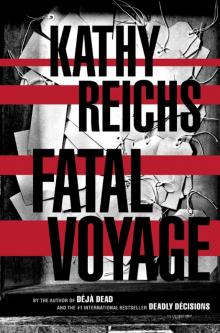 Fatal Voyage
Fatal Voyage 206 Bones
206 Bones Bones to Ashes
Bones to Ashes Terminal
Terminal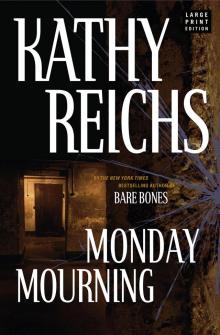 Monday Mourning
Monday Mourning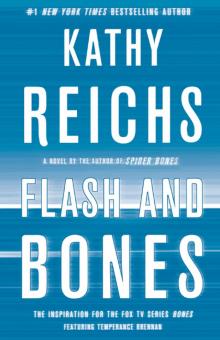 Flash and Bones
Flash and Bones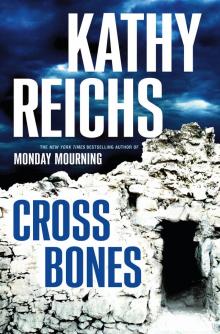 Cross Bones
Cross Bones Devil Bones
Devil Bones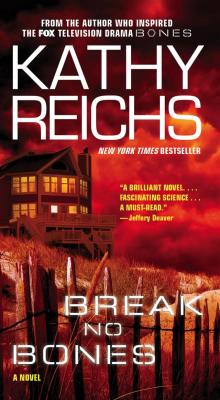 Break No Bones
Break No Bones Swamp Bones
Swamp Bones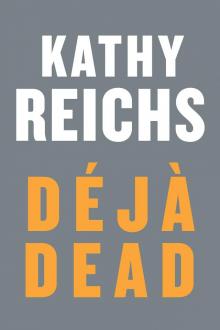 Déjà Dead
Déjà Dead Shock
Shock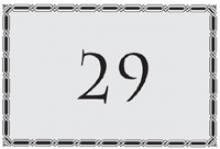 Spider Bones
Spider Bones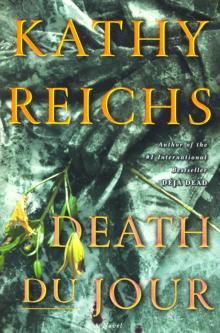 Death Du Jour
Death Du Jour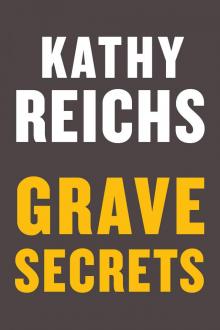 Grave Secrets
Grave Secrets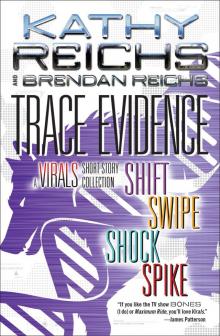 Trace Evidence: A Virals Short Story Collection
Trace Evidence: A Virals Short Story Collection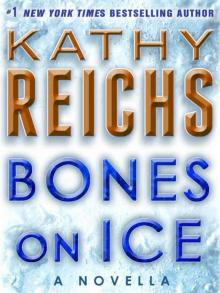 Bones on Ice
Bones on Ice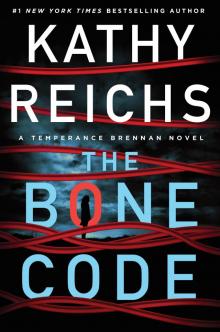 The Bone Code
The Bone Code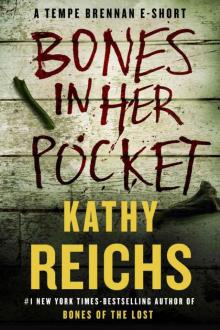 Bones in Her Pocket
Bones in Her Pocket Seizure:
Seizure: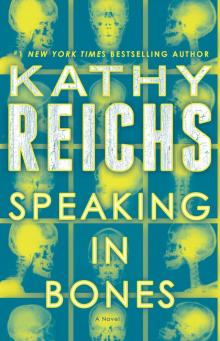 Speaking in Bones
Speaking in Bones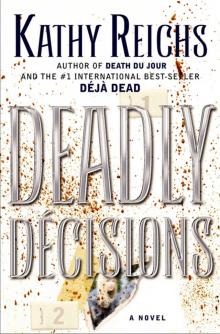 Deadly Decisions
Deadly Decisions Spike
Spike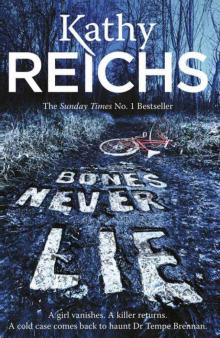 Bones Never Lie
Bones Never Lie Bones of the Lost
Bones of the Lost Virals 03.5 - Swipe
Virals 03.5 - Swipe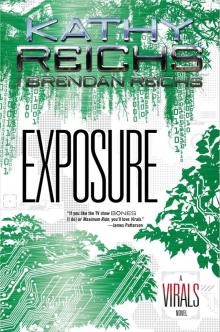 Exposure
Exposure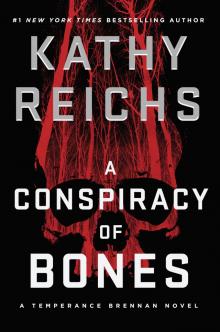 A Conspiracy of Bones
A Conspiracy of Bones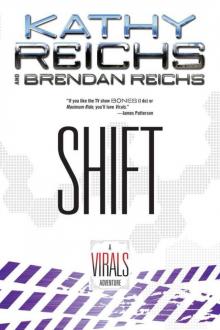 Shift (tory brennan)
Shift (tory brennan)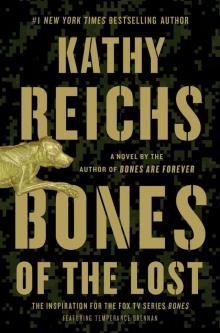 Bones of the Lost: A Temperance Brennan Novel tb-16
Bones of the Lost: A Temperance Brennan Novel tb-16 Virals tb-1
Virals tb-1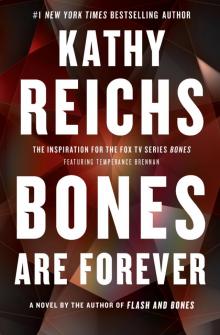 Bones Are Forever tb-15
Bones Are Forever tb-15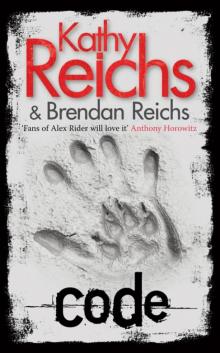 Code tb-3
Code tb-3 Seizure tb-2
Seizure tb-2 Deadly Descisions
Deadly Descisions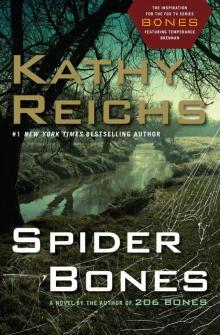 Spider Bones: A Novel
Spider Bones: A Novel